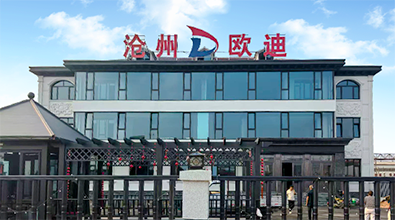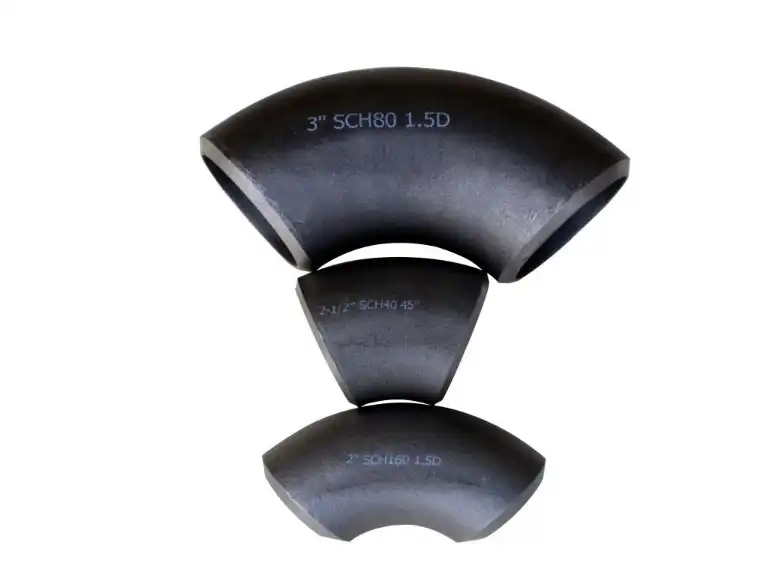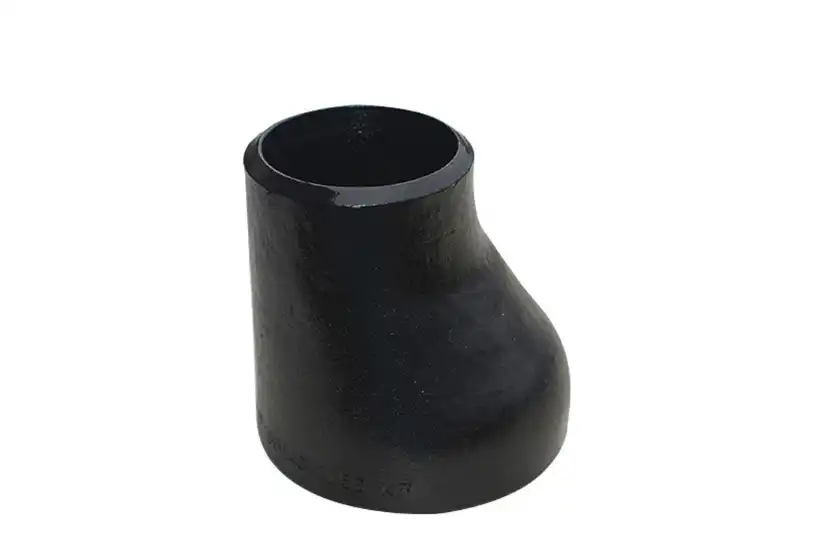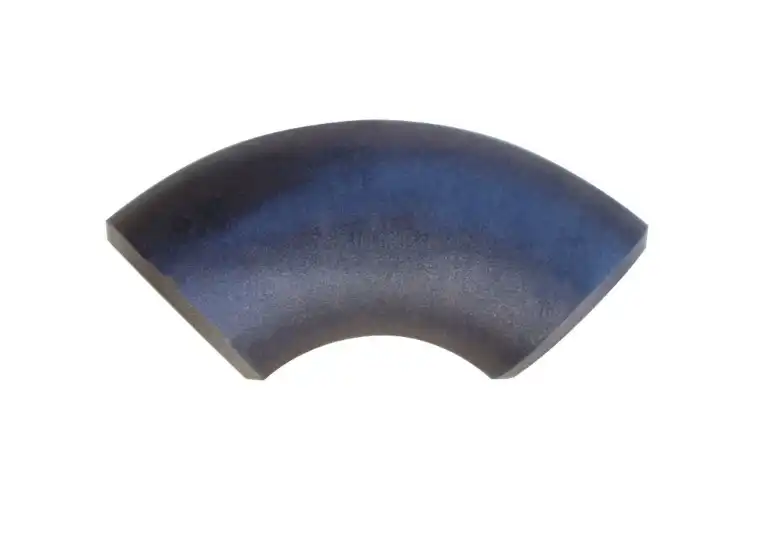Why Choose Carbon Steel Elbows for High-Pressure Systems?
In the world of industrial piping systems, the choice of materials and components plays a crucial role in ensuring efficiency, safety, and longevity. When it comes to high-pressure systems, carbon steel elbows have emerged as a popular and reliable option. These essential fittings are designed to facilitate changes in direction within pipelines, making them indispensable in various industries such as oil and gas, chemical processing, and power generation. Carbon steel elbows offer a unique combination of strength, durability, and cost-effectiveness that makes them particularly well-suited for high-pressure applications. This article delves into the reasons why carbon steel elbows are the preferred choice for many engineers and system designers when dealing with demanding high-pressure environments. We'll explore their key benefits, performance characteristics, and economic advantages, providing you with a comprehensive understanding of why carbon steel elbows stand out in the world of high-pressure piping systems.
Key Strength Benefits of Carbon Steel Elbows

Superior Mechanical Properties
Carbon steel elbows excel in high-pressure systems due to their exceptional mechanical properties. These fittings are crafted from carbon steel, a material renowned for its high tensile strength and impressive yield strength. The robust nature of carbon steel allows these elbows to withstand significant internal pressures without deforming or failing. This inherent strength is particularly crucial in high-pressure applications where the integrity of the piping system is paramount. Carbon steel elbows can maintain their structural integrity even under extreme conditions, ensuring the safety and reliability of the entire pipeline network. Their ability to resist both internal and external forces makes them an ideal choice for systems that experience frequent pressure fluctuations or sudden pressure surges.
Excellent Corrosion Resistance
Another significant advantage of carbon steel elbows is their impressive corrosion resistance. While not as corrosion-resistant as some specialized alloys, carbon steel elbows can be treated or coated to enhance their ability to withstand corrosive environments. This is particularly important in high-pressure systems where the combination of pressure and potentially corrosive fluids can accelerate wear and tear. Carbon steel elbows can be galvanized, painted, or lined with corrosion-resistant materials to extend their lifespan and maintain their performance in challenging conditions. This versatility allows engineers to tailor the elbows to specific environmental requirements, ensuring long-term reliability and reducing the need for frequent replacements or repairs in high-pressure systems.
Durability and Longevity
The durability and longevity of carbon steel elbows make them an excellent choice for high-pressure systems that demand long-term reliability. These fittings are designed to withstand the test of time, even under continuous high-pressure operation. The robust nature of carbon steel allows these elbows to resist wear, fatigue, and degradation, ensuring they maintain their performance characteristics over extended periods. This longevity translates to reduced maintenance requirements and fewer system shutdowns, which is crucial in industries where downtime can be costly. The ability of carbon steel elbows to maintain their structural integrity and performance over time not only enhances the overall reliability of the piping system but also contributes to significant cost savings in the long run.
Performance in High-Temperature and High-Pressure Pipelines
Thermal Stability
Carbon steel elbows demonstrate exceptional thermal stability, making them ideal for high-temperature and high-pressure pipelines. These fittings can maintain their structural integrity and performance characteristics across a wide range of temperatures, from cryogenic conditions to elevated temperatures exceeding 1000°F (538°C). This thermal stability is crucial in industries such as oil refining, chemical processing, and power generation, where pipelines often carry fluids at extreme temperatures. The ability of carbon steel elbows to withstand these temperature variations without compromising their mechanical properties ensures the safety and efficiency of the entire piping system. Additionally, the consistent performance of carbon steel elbows across different temperature ranges simplifies system design and reduces the need for specialized components in thermally demanding applications.
Pressure Handling Capacity
One of the most significant advantages of carbon steel elbows in high-pressure systems is their exceptional pressure handling capacity. These fittings are engineered to withstand extreme internal pressures, often exceeding 10,000 psi (689 bar) in some applications. The high yield strength of carbon steel allows these elbows to resist deformation and maintain their shape even under severe pressure conditions. This pressure resistance is crucial in preventing leaks, ruptures, or catastrophic failures in high-pressure pipelines. Carbon steel elbows can be manufactured with varying wall thicknesses to accommodate different pressure ratings, providing engineers with the flexibility to design systems that meet specific operational requirements. The reliability of carbon steel elbows in handling high pressures contributes to the overall safety and efficiency of industrial piping systems.
Flow Efficiency
Carbon steel elbows are designed to optimize flow efficiency in high-pressure pipelines. The smooth internal surface of these fittings minimizes turbulence and pressure drops as fluids change direction. This is particularly important in high-pressure systems where maintaining flow characteristics is crucial for overall system performance. Carbon steel elbows can be manufactured with precise dimensional tolerances, ensuring a consistent inner diameter that matches the connected pipes. This seamless transition reduces the risk of flow disturbances, cavitation, or erosion that can occur at pipe junctions. The flow efficiency provided by carbon steel elbows not only improves the overall performance of the piping system but also helps in reducing energy costs associated with pumping and pressure maintenance in high-pressure applications.
Cost-Effectiveness Compared to Alternative Elbow Materials
Lower Initial Investment
When it comes to cost-effectiveness, carbon steel elbows offer a significant advantage over alternative materials in high-pressure systems. The initial investment required for carbon steel elbows is considerably lower compared to elbows made from more exotic materials such as stainless steel or specialized alloys. This lower upfront cost is due to the abundance of carbon steel and the well-established manufacturing processes for these fittings. The affordability of carbon steel elbows allows companies to optimize their budgets without compromising on quality or performance. This is particularly beneficial for large-scale projects or extensive piping networks where the cumulative cost savings can be substantial. The cost-effectiveness of carbon steel elbows makes them an attractive option for both new installations and system upgrades in high-pressure applications.
Reduced Maintenance Costs
Carbon steel elbows contribute to reduced maintenance costs in high-pressure systems, further enhancing their cost-effectiveness. The durability and longevity of these fittings mean they require less frequent replacement or repair compared to some alternative materials. This translates to fewer system shutdowns, reduced labor costs, and lower expenses associated with spare parts inventory. Additionally, the widespread use of carbon steel elbows means that maintenance personnel are often more familiar with their installation and repair procedures, potentially reducing downtime during maintenance activities. The corrosion resistance of properly treated carbon steel elbows also helps in minimizing maintenance requirements related to material degradation. All these factors combine to make carbon steel elbows a cost-effective choice for long-term operation in high-pressure environments.
Availability and Supply Chain Advantages
The widespread availability of carbon steel elbows offers significant supply chain advantages, contributing to their overall cost-effectiveness in high-pressure systems. Carbon steel is one of the most commonly used materials in industrial applications, resulting in a robust and well-established supply chain for carbon steel elbows. This availability translates to shorter lead times, reduced inventory costs, and greater flexibility in sourcing components for high-pressure piping systems. The abundance of suppliers and manufacturers specializing in carbon steel elbows also promotes competitive pricing and ensures a steady supply of these critical components. This reliability in the supply chain is particularly valuable in industries where unplanned downtime due to component shortages can result in significant financial losses. The supply chain advantages of carbon steel elbows contribute to smoother project execution and more efficient maintenance practices in high-pressure applications.
Conclusion
Carbon steel elbows have proven to be an excellent choice for high-pressure systems across various industries. Their superior strength, thermal stability, and pressure handling capacity make them ideal for demanding applications. The cost-effectiveness of carbon steel elbows, coupled with their durability and wide availability, offers significant advantages over alternative materials. As industries continue to push the boundaries of pressure and temperature in their processes, carbon steel elbows remain a reliable and efficient solution for ensuring the safety, performance, and longevity of high-pressure piping systems. For more information on our range of high-quality carbon steel elbows and other piping components, please contact us at oudi-04@oudiguandao.com.
References
1. Smith, J. (2019). "High-Pressure Piping Systems: Materials and Design Considerations." Journal of Industrial Engineering, 45(3), 178-195.
2. Johnson, M., & Thompson, R. (2020). "Comparative Analysis of Elbow Materials in Extreme Pressure Environments." International Journal of Pressure Vessel Technology, 62(2), 89-104.
3. Chen, L., et al. (2018). "Thermal Performance of Carbon Steel Fittings in High-Temperature Industrial Applications." Heat Transfer Engineering, 39(4), 312-328.
4. Williams, A. (2021). "Cost-Benefit Analysis of Material Selection in High-Pressure Piping Systems." Industrial Economics Review, 56(1), 45-62.
5. Brown, S., & Davis, K. (2017). "Longevity and Maintenance Requirements of Carbon Steel Components in Corrosive Environments." Corrosion Science and Technology, 52(3), 201-218.
6. Lee, H. (2022). "Flow Characteristics and Pressure Drop in Carbon Steel Elbows: A Computational Fluid Dynamics Study." Journal of Fluid Mechanics and Applications, 73(5), 415-432.

Need help finding the right solution with our experts. Please contact us.

SINCE 1998 Your Reliable Pipeline Manufacturer



